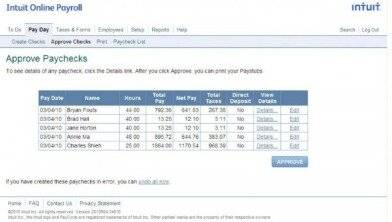Content

External accounts, like income statements, usually depend on annual accounting periods. At the end of an accounting period, a company will close out the period. After all closing entries are made, the company will be ready to run its financial reports for that accounting period. Closing a period may take days, weeks, or even months into the next accounting period, and two periods can run simultaneously as the previous period is closed out.

You can either manually set the accounting period to the Pending Close status or Zuora will set the accounting period to this status in certain conditions. If the Allow Non-G/L Changes box is checked on a period record, you can make changes to posting transactions that do not affect the general ledger. You must have the Setup permission Allow Non G/L Changes to make these changes.
What are performance metrics?
Assign the number sequence for the period and then verify that the GL audit numbering is gapless. If you use NetSuite OneWorld, you can create sequences for each subsidiary. If you use Multi-Book Accounting, you can define book-specific numbering sequences. The cash flow statement discloses how well an entity generated cash to fund its operating expenses, settle its debt obligations, and fund its investments during the reporting period.
IRS lengthens lookback period for tax refund claims during pandemic – Accounting Today
IRS lengthens lookback period for tax refund claims during pandemic.
Posted: Mon, 27 Feb 2023 21:38:00 GMT [source]
For freelancers and SMEs in the UK & Ireland, Debitoor adheres to all UK & Irish invoicing and accounting requirements and is approved by UK & Irish accountants. On the Subsidiaries subtab, mark the Lock box for each subsidiary you want to lock. For more information, including the procedure for closing the period, see Using the Period Close Checklist and Inventory Tasks on the Period Close Checklist. The Period Close Checklist provides access to related system and user notes. Go to Period Close Checklist of the period you want to close.
Why Most Chains Use a 4 Week Accounting Period
The Structured Query Language comprises several different data types that allow it to store different types of information… The word in the example sentence does not match the entry word. Improve your vocabulary with English Vocabulary in Use from Cambridge. Sage 100 Contractor Accounting, project management, estimating, and service management.
- Zuora even shows you all the unresolved transactions that need your attention before you close your accounting period.
- Only controllers and administrators with the permission to perform period close tasks at the parent subsidiary level can select subsidiaries to lock or unlock.
- These articles and related content is the property of The Sage Group plc or its contractors or its licensors (“Sage”).
- A reporting period can also be for a shorter period of time, such as a month, a week or a few days.
- Reopen the period, which reopens all of the subsequent closed periods.
- Nor do monthly accounting periods have to start on the first of the month.
- Changes to addresses are not permitted in a closed accounting period.
The Accounting Period period can usually be a calendar year or a fiscal year. You must set up these accounting periods before transactions can be posted. Our accounting software won’t accommodate a 13 period year.Then update your accounting software. Nearly all accounting software packages today have flexible reporting period capabilities. Even the latest version of QuickBooks will handle a four week period. When you approve a posting transaction, you can select a different Posting Period than the one initially displayed.
How Long is the Reporting Period?
These articles and related content is not a substitute for the guidance of a lawyer , tax, or compliance professional. When in doubt, please consult your lawyer tax, or compliance professional for counsel. This article and related content is provided on an” as is” basis.
What are the 2 types of accounting period?
It is divided into two types: calendar year and fiscal year. As a result, it can begin on any month's first day. A financial year, on the other hand, is the time that begins on January 1st and ends on December 31st of the following year (for example 1st April and ending on 31st March of next year).
All businesses are allowed to define as many periods as they want as long as they meet legal requirements. Five key concepts underlie accounting procedures and the creation of financial statements, even though there are many rules for accountants. The accrual principle, matching principle, historic cost principle, conservative principle, and the principle of substance over form are those. The accounting period has no fixed length, and it can be of any length, such as one year or less and maybe more than one year.
calendar year accounting period
13-week fiscal quarters such as the 13 weeks ending on the last Saturday in April, etc. 52- or 53-week fiscal year such as the 52 or 53 weeks ending on the last Saturday of January, etc. You can consent to processing for these purposes configuring your preferences below. If you prefer to opt out, you can alternatively choose to refuse consent. Please note that some information might still be retained by your browser as it’s required for the site to function.
Is an Accounting Period Always 12 Months?
No, an accounting period can be any established period of time in which a company wishes to analyze its performance. It could be weekly, monthly, quarterly, or annually.
The following are the financial statements that are usually prepared for a reporting period. The relevant accounting period is normally stated in the header of the financial reports. In some of the ERP tools there are more than 12 accounting periods in a financial year. Older systems sometimes called these periods “Month 0” and “Month 13”. Financial statements, such as the income statement and balance sheet, identify the accounting period in their headers.
What is an accounting period?
The Override Period Restrictions permission is required to access this checklist. The statement of retained earnings shows the portion of the company’s profit that’s been distributed among its owners and the portion kept in the company for future growth. A company can choose to use the traditional calendar year of 12 months or adopt a 12-month fiscal year. Sage Intacct Advanced financial management platform for professionals with a growing business. In case a business wants to change from a calendar year to a fiscal year, they would need special permission from the IRS. The Internal Revenue Service allows taxpayers to either use the calendar-year taxpayers or fiscal-year for tax reporting.
